
The illustration above shows the approximate size of the planets relative to each other.
The Sun's diameter is more then 100 times the size of the Earth's.
The planets are not shown at the appropriate distance from the Sun.

This illustration shows the movement of the 4 inner planets around the Sun.
There is not enough space to show the 4 outer planets as well.
It takes our Earth one year (365 days) to make one complete
revolution around the Sun, Mercury only takes 88 days, Venus
225 days and Mars
needs 687 days to make one complete revolution.
The illustration only shows 365 days, Mars needs more time that's why
part of its revolution is skipped.
Note that the Sun is not in the exact center since the planets move in elliptical orbits.
Sometimes Mars and Earth are close together but at other times they are far apart.
Therefor a trip to Mars is only feasible every 2 years.
This image is created by a small Python program written by Mr. C. He.

The Sun is the star at the center of our Solar System. It is a nearly perfect sphere of hot plasma, with internal convective motion that generates a magnetic field via a dynamo process. It is by far the most important source of energy for life on Earth. The surface temperature is about 10,000 degrees Fahrenheit. Our Sun (and the Earth) are about 4,500,000,000 years old.
Radius: 433,000 mile or 696,000 km
(more than 100 times the radius of the earth)

Mercury is the smallest and innermost planet in the Solar System. Its orbit around the Sun takes almost 88 days, the shortest of all the planets in the Solar System. It is named after the Roman deity Mercury, the messenger of the gods. The temperature varies between -800 and +290 degrees Fahrenheit.
Distance from the Sun: 36 million mile or 58 million km.
Radius: 1516 mile or 2439 km.

Venus is the second planet from the Sun. It is named after the Roman goddess of love and beauty. As the second-brightest natural object in the night sky after the Moon, Venus can cast shadows and can be, on rare occasion, visible to the naked eye in broad daylight. The average temperature is 850 degrees Fahrenheit.
Distance from the Sun: 67 million mile or 108 million km.
Radius: 3760 mile or 6050 km.
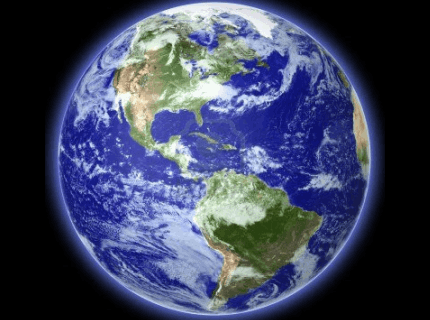
Earth is the third planet from the Sun and the only astronomical object known to harbor life. According to radiometric dating estimation and other evidence, Earth formed over 4.5 billion years ago. About 71 percent of the Earth's surface is water-covered. The average temperature is about 58 degrees Fahrenheit.
Distance from the Sun: 93 million mile or 150 million km.
Radius: 3959 mile or 6370 km.
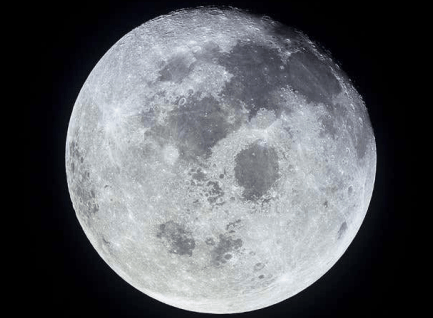
The Moon is NOT a planet as it does not orbit around the Sun but around our planet Earth. It takes the Moon about 29.5 days to orbit the Earth and it always shows the same side to the Earth. The high and low tides of our oceans are caused by the gravity of the Moon. The average temperature on the Moon varies from -298 degrees Fahrenheit at night, to +224 degrees Fahrenheit during the day.
Distance from Earth: 239.000 miles or 382,000 km
Radius: 1086 mile or 1737 km.(Almost 4 x smaller then the earth)
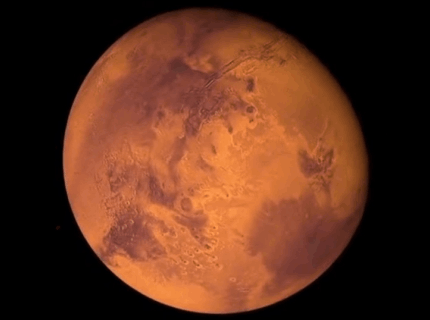
Mars is the fourth planet from the Sun and the second-smallest planet in the Solar System after Mercury. In English, Mars carries the name of the Roman god of war and is often referred to as the 'Red Planet'. The red color is due to a lot of rust in the Martian rocks. The temperature on Mars varies between -195 and +70 degrees Fahrenheit.
Distance from the Sun: 142 million mile or 228 million km.
Radius: 2106 mile or 3390 km.(Almost half the size of the earth)
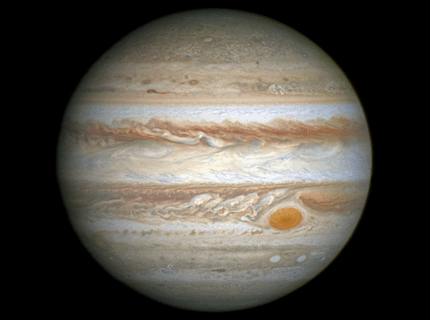
Jupiter is the fifth planet from the Sun and the largest in the Solar System. It is a gas giant with a mass one-thousandth that of the Sun, but two-and-a-half times that of all the other planets in the Solar System combined. The average temperature is -234 degrees Fahrenheit.
Distance from the Sun: 484 million mile or 780 million km.
Radius: 43,441 mile or 69,900 km.(More then 10 x bigger then the earth)
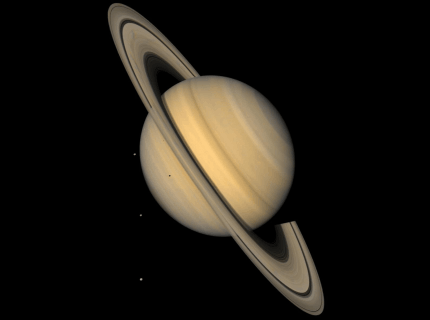
Saturn is the sixth planet from the Sun and the second-largest in the Solar System, after Jupiter. It is a gas giant with an average radius of about nine times that of Earth. Saturn has more then 82 moons, it's average temperature is -288 degrees Fahrenheit. It is unclear how and when the rings were formed, they are comprised of millions of generally small rocks creating illusions of ring systems.
Distance the from Sun: 890 million mile or 1432 million km.
Radius: 36,184 mile or 58,220 km.

Uranus is the seventh planet from the Sun. It is similar in composition to Neptune, and both have bulk chemical compositions which differ from that of the larger gas giants Jupiter and Saturn. Uranus’s 27 known moons are accompanied by at least 10 narrow rings. The average temperature is a frigid -353 degrees Fahrenheit.
Distance from the Sun: 1784 million mile or 2870 million km.
Radius: 15,760 mile or 25,358 km

Neptune is the eighth and farthest known planet from the Sun in the Solar System. A year on Neptune lasts 165 Earth years but one day only takes 16 hours. It's average temperature is -390 degrees Fahrenheit. Neptune has 14 moons and 6 faint rings. Neptune has an incredibly thick atmosphere comprised of 74% hydrogen, 25% helium and approximately 1% methane.
Distance from the Sun: 2793 million mile or 4494 million km.
Radius: 15,299 mi or 24,616 km
A three minute video about our Moon
A four minute video giving an overview of our solar system
The distance between the planets is so huge compared to the size of the planets
that it is not possible to show in one image both the distance between the planets
and the size of the planets to scale. This 5 minute video explains it.
Exploring Our Solar System - with Stuart Eves, 44 minutes.
A Journey to the Centre of the Sun, 55 minutes.
For more info about the solar system visit:
https://solarsystem.nasa.gov/
or
https://en.wikipedia.org/
or
google "solar system"
Offline Website Builder